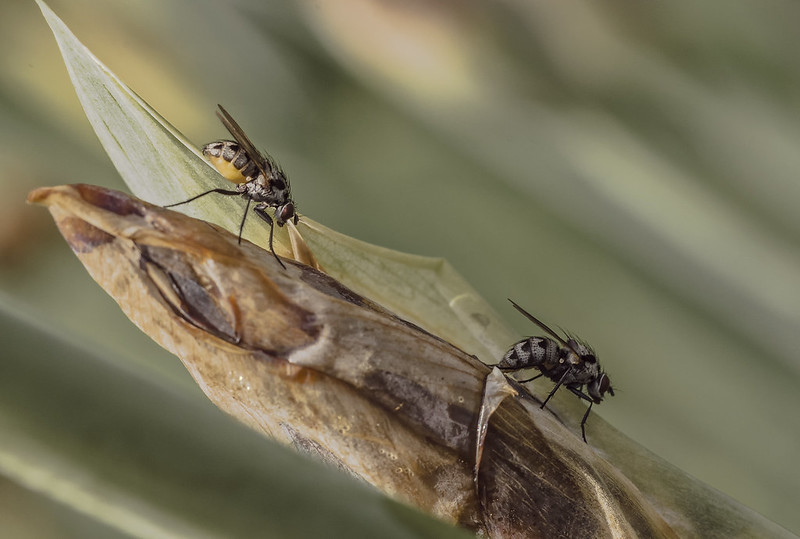In the past few seasons, the buds of bearded irisis I planted to attract crab spiders and insects were mysteriously rotten and decayed.
Last year, I find out that the cause of this "illnes" is a iris bud fly (Orthacheta dissimilis), which lay eggs into a iris bud. I did't find how this fly looks, except in the maggot stadium.
Searching in my old photos and re-processed, I've find this shot of a fly that lays eggs in a already rotting bud. I think a sexual distinction is visible - a yellow male and a gray female, I presume!
Is it iris bud fly?
Does anyone who know a flies much better than I, can say I'm right?
 DSC_4759 makro 2017
DSC_4759 makro 2017Everything was taken with Nikon D7000; TOKINA macro 100 f2.8 D AT-X PRO; hand held; natural light on suny day, f16 with different speeds; ISO500.


